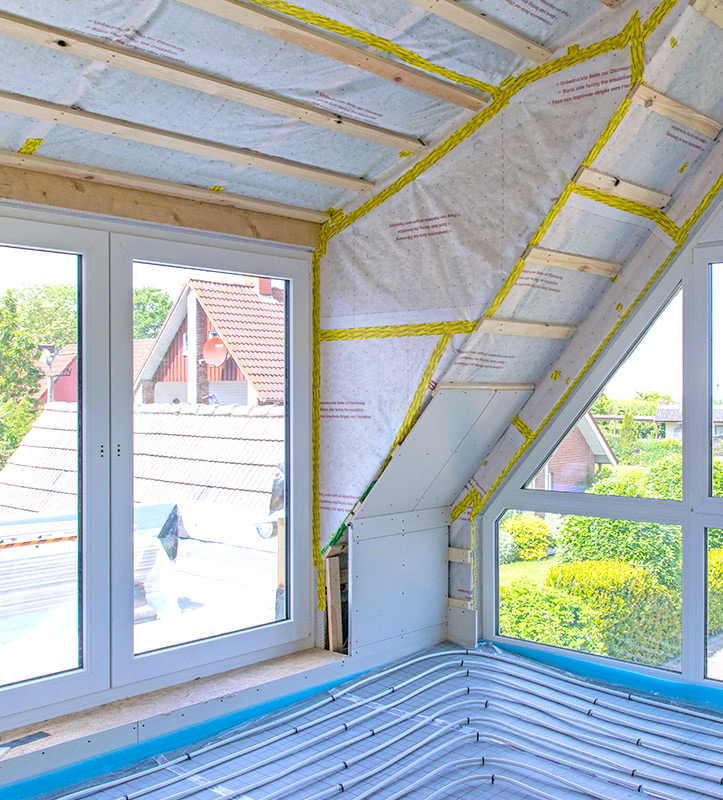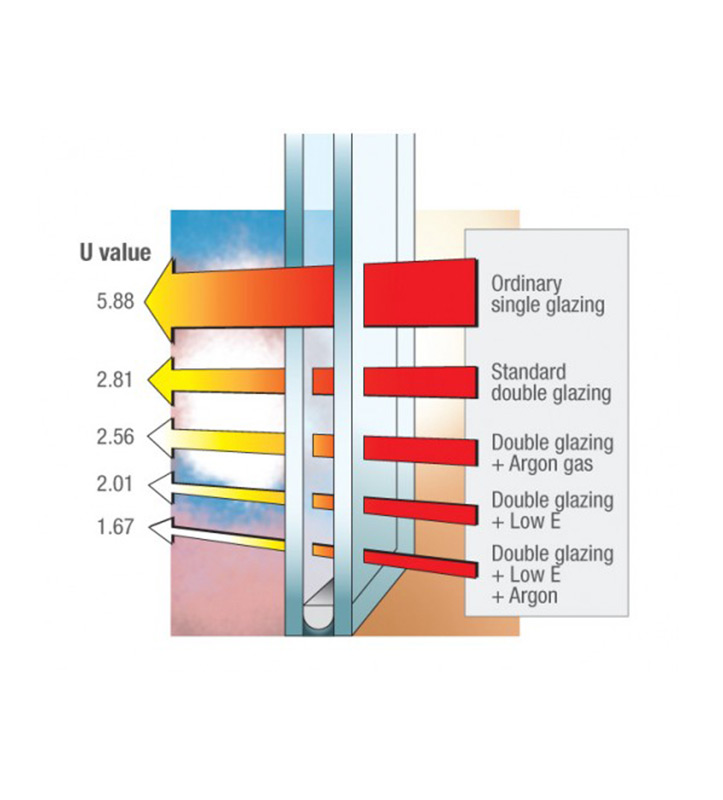
Energia utilizată în locuințe este una dintre sursele majore de emisii de gaze cu efect de seră. Cu toții putem contribui prin reducerea consumului nostru de energie. Cu ferestre și uși mai eficiente, vă reduceți și costurile de încălzire sau răcire, astfel încât decizia este simplă. De aceea, metodele de reducere a consumului de energie și de economisire a costurilor de încălzire sunt la mare căutare.

Cum contribuie ferestrele și ușile la izolarea termică a unei case sau a unui apartament?
O bună izolare termică este la fel de eficientă doar ca cea mai slabă verigă din lanț. Aceasta este adesea vechile ferestre și uși de intrare. Cele mai bune izolații pentru zidărie și perete sunt de puțin folos dacă aveți uși și ferestre ineficiente.
După o utilizare îndelungată, ramele ferestrelor și ușilor se deformează adesea, iar garniturile își pierd funcționalitatea. Acest lucru permite aerului rece să curgă liber în camere și aerului cald să scape.

„Valoarea Uw” este adesea utilizată pentru a exprima eficiența energetică. Ce înseamnă?
Această valoare, care obișnuia să fie numită „valoarea k”, este cunoscută și ca transmitanță termică și este dată în wați pe metru pătrat Kelvin (W / m²K). Indică cantitatea de căldură care curge prin 1 m² dintr-o fereastră la o diferență constantă de temperatură de 1 Kelvin între exteriorul și interiorul ferestrei.
Simplu exprimat, transmitanța termică Uw este alcătuită din transmitanța termică a cadrului și a profilului canaturii (Uf), a geamului (Ug) și a compusului de etanșare pentru geamuri utilizat.

Mai puțin este mai mult când vine vorba de valoarea U: cu cât valoarea Uw este mai mică, cu atât este mai bună izolația termică a ferestrei.
Regula generală:
Pentru fiecare îmbunătățire de 10% a valorii Uw, economisiți aproximativ 1,2 litri de ulei de încălzire pe metru pătrat de fereastră pe an.
Nu pare prea mult? Să presupunem că vă înlocuiți ferestrele mai vechi de 1995 (Uw aproximativ = 2,8 W / m²K) cu ferestre Aplast noi cu izolație (Uw = 1,0 W / m²K). Pentru o locuință unifamilială cu o suprafață acoperită de ferestre de aproximativ 30 m² înseamnă aproximativ 650 de litri mai puțin ulei de încălzire!
Cu sticla izolatoare de la Aplast, chiar și cerințele stricte pot fi îndeplinite cu ușurință. Decisive pentru acest rezultat sunt măsurile de protecție termică a geamurilor, spațiul dintre geamurile de sticlă și distanțierele dintre ele. Geamurile izolante din sticlă, acoperite cu folii metalice subțiri permit să intre razele de lumină cu lungime de undă scurtă, dar reflectă razele de căldură cu lungime de undă lungă din spațiul de locuit din interior.

Luați legătura cu noi și deveniți partener. Fie că sunteți un reprezentant al unui lanț de magazine de bricolaj, un instalator reputat, un inginer civil sau un arhitect, suntem aici pentru a vă ajuta să profitați la maximum de afacerea dvs.